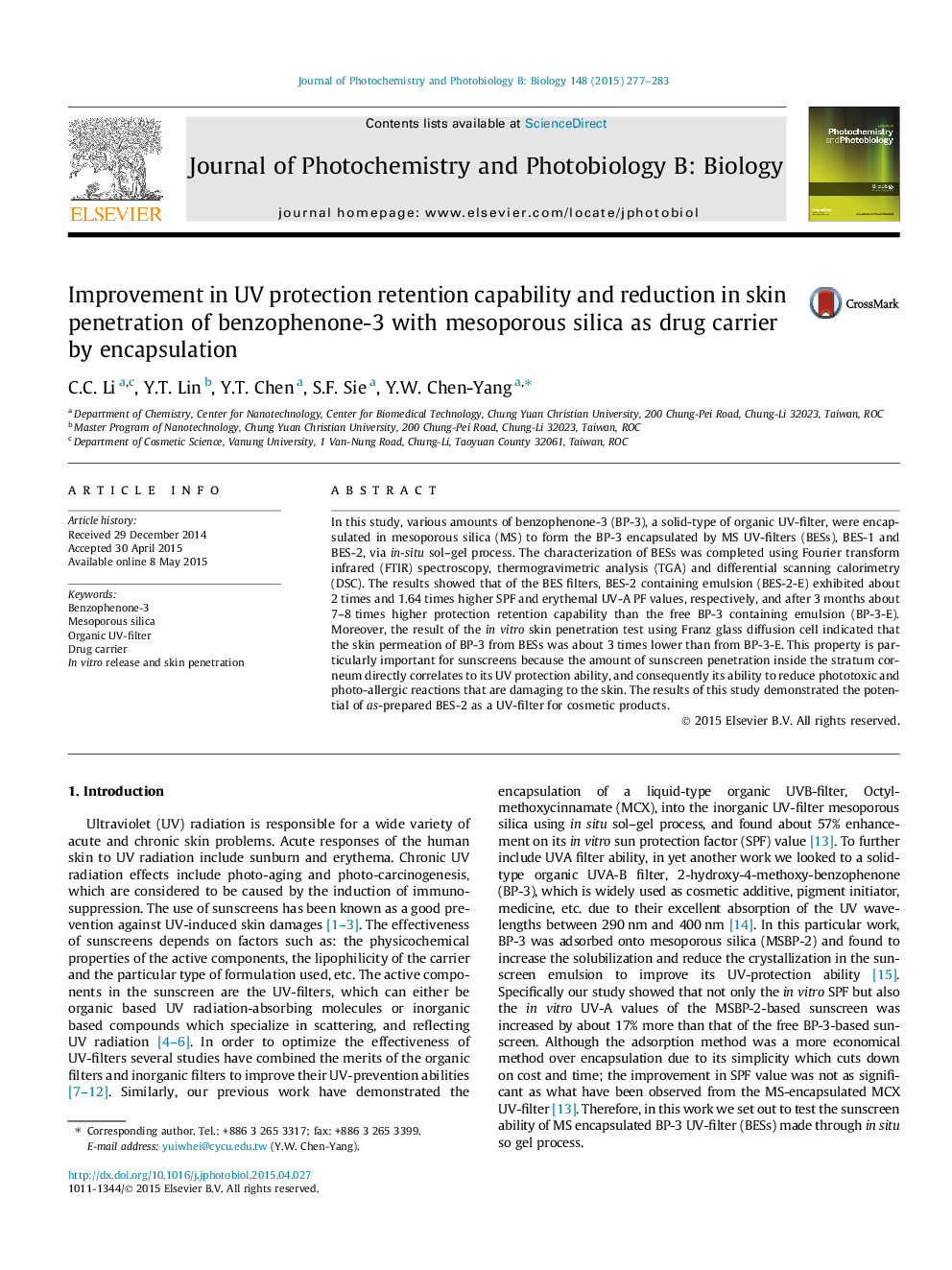| کد مقاله | کد نشریه | سال انتشار | مقاله انگلیسی | نسخه تمام متن |
|---|---|---|---|---|
| 29716 | 44431 | 2015 | 7 صفحه PDF | دانلود رایگان |
• Mesoporous silica encapsulated BP-3 UV-filter (BES-2) was successfully prepared.
• The BES-2 containing sunscreen exhibited ca. 2 times improvement in SPF.
• The BES-2 containing sunscreen reduced ca. 3 times for skin permeation of BP-3.
In this study, various amounts of benzophenone-3 (BP-3), a solid-type of organic UV-filter, were encapsulated in mesoporous silica (MS) to form the BP-3 encapsulated by MS UV-filters (BESs), BES-1 and BES-2, via in-situ sol–gel process. The characterization of BESs was completed using Fourier transform infrared (FTIR) spectroscopy, thermogravimetric analysis (TGA) and differential scanning calorimetry (DSC). The results showed that of the BES filters, BES-2 containing emulsion (BES-2-E) exhibited about 2 times and 1.64 times higher SPF and erythemal UV-A PF values, respectively, and after 3 months about 7–8 times higher protection retention capability than the free BP-3 containing emulsion (BP-3-E). Moreover, the result of the in vitro skin penetration test using Franz glass diffusion cell indicated that the skin permeation of BP-3 from BESs was about 3 times lower than from BP-3-E. This property is particularly important for sunscreens because the amount of sunscreen penetration inside the stratum corneum directly correlates to its UV protection ability, and consequently its ability to reduce phototoxic and photo-allergic reactions that are damaging to the skin. The results of this study demonstrated the potential of as-prepared BES-2 as a UV-filter for cosmetic products.
1. The Franz glass diffusion cell tests show about 3 times lower skin permeation of BP-3 from BES-2-E than from BP-3-E, largely improving the prevention of cutaneous reaction and systemic absorption. 2. The changes in SPF reduction percentage with time show that BES-2-E exhibited about 7–8 times higher UV protection retention capability in 3 months compared to BP-3-E, indicating that the shelf life of BES-2-E was much higher than that of BP-3-E.Figure optionsDownload as PowerPoint slide
Journal: Journal of Photochemistry and Photobiology B: Biology - Volume 148, July 2015, Pages 277–283
